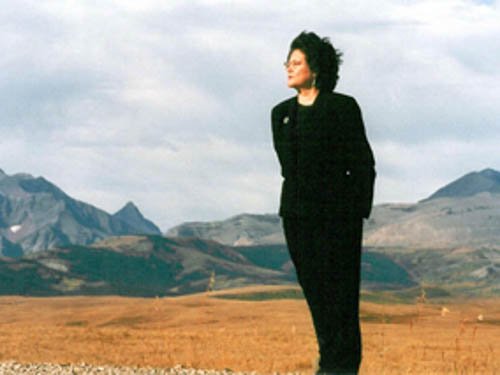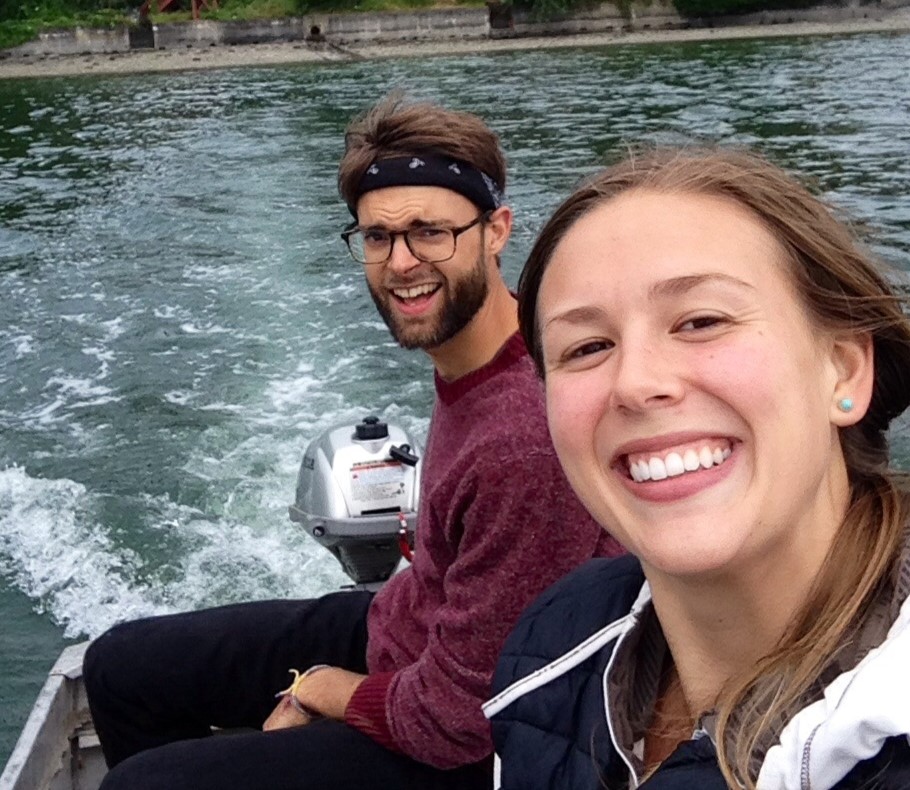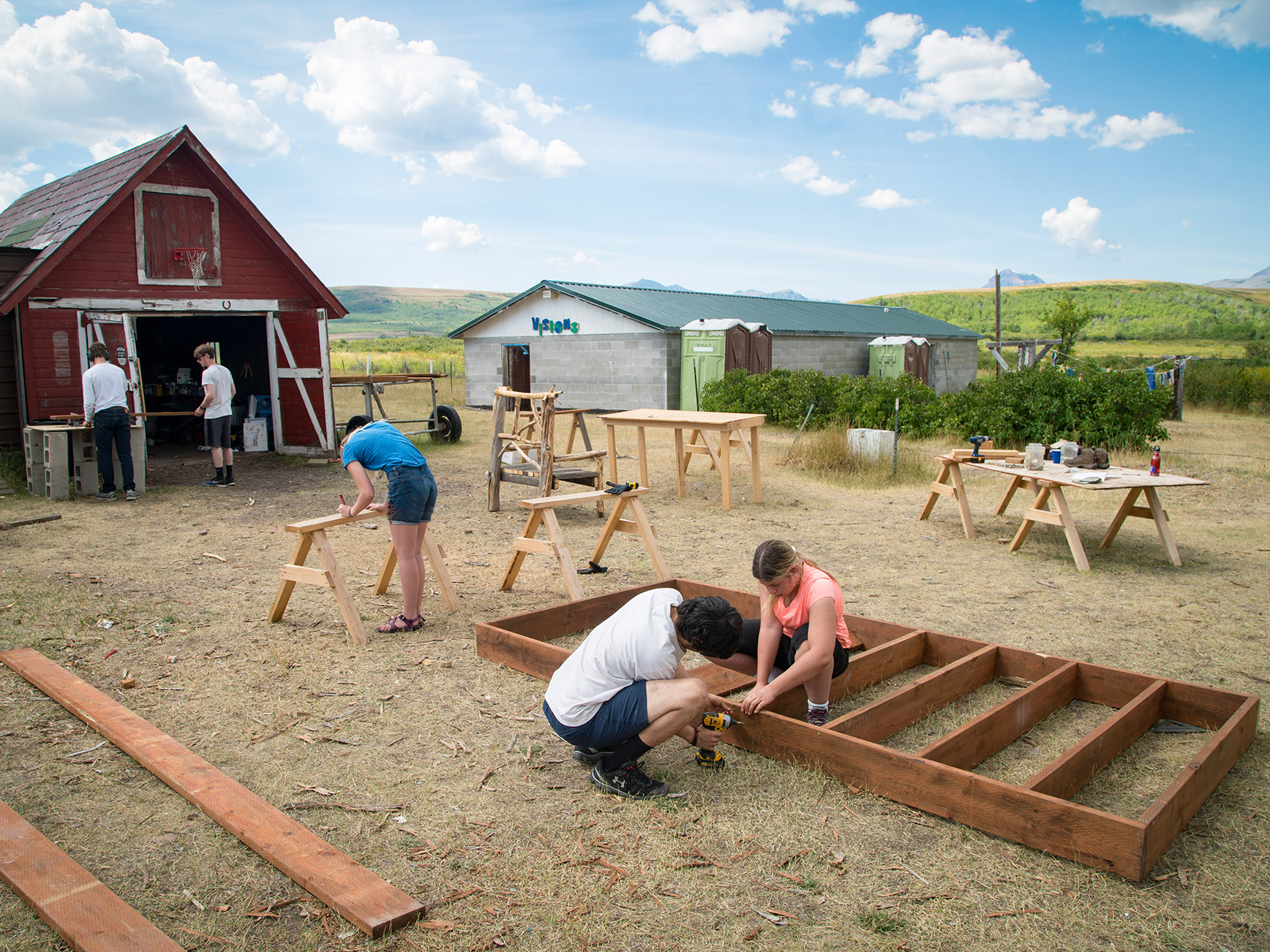Montana Blackfeet
High School Service Program
Conservation & Tradition on a

MONTANA BLACKFEET 1
JUNE 23 to JULY 01 | 9 DAYS
30 HRS SERVICE | TUITION $3,190
MONTANA BLACKFEET 2
JULY 06 to JULY 26 | 21 DAYS
85 HRS SERVICE | TUITION $6,290
MONTANA BLACKFEET 3
AUGUST 01 to AUGUST 12 | 12 DAYS
40 HRS SERVICE | TUITION $4,290
CHECK OUT: PROGRAM AVAILABILITY
“I loved connecting with people and listening to their stories. This year I got to dance along with the dancers at the Sun Dance and it was a brand new experience for me. I absolutely loved it.”
Embracing Projects That Matter
Montana reservations are our oldest program sites and truly special places. For three decades, VISIONS has collaborated with Blackfeet organizations, including the Yellow Bird Woman Sanctuary. This partnership between the Nature Conservancy and Blackfeet Nation is a model for other tribes seeking to preserve their lands. As the sanctuary ranch summer caretakers, VISIONS teens help renovate buildings, repair fences, remove invasive plant species and more.
With the highest percentage of Americans living below the poverty line, Indian tribes often lack adequate housing and social resources, so our service work aims to meet these needs. We repair and renovate homes, build wheelchair ramps, community garden structures and playgrounds. We assist elders with home-upkeep, like mowing lawns and house painting, and serve meals for the Children’s Nutrition Program and FAST Blackfeet, a food security and distribution program. For many seasons, our longer program has also chopped firewood, secured lodge poles for the dance structure and served meals at the sacred Sun Dance. We are honored to be a part of this transformative experience.
“There were no ‘friend groups’ and nobody ever felt left out. We were like one big family. I felt comfortable with everyone there. I tried new things, met new people, and learned about myself. I feel like I have grown a lot and I hope I have brought that home with me.”

Making Meaningful Connections
Our home base is the Yellow Bird Woman Sanctuary conservation ranch, a few miles outside the main reservation town of Browning. Accommodations of a ranch house, bunkhouse, showers, kitchen and historic out-buildins are basic, but clean and comfortable. The breathtaking view of the Rocky Mountain Front absorbs us. We were originally invited to live here in the early 2000s by the late Elouise Cobell, a tribal member highly respected for her fight to preserve native lands. We continue to live and work here in her honor. While here, you will meet tribal historians, spiritual leaders, storytellers, ranchers and naturalists. You will join in sweat ceremonies, maybe help build a sacred Sun Dance lodge, and attend a powwow. It may just be a few weeks in summer, but a cultural immersion like this provides the deep understanding of many seasons.
Our
Home:
Browning,
Montana
“The outdoor activities pushed me outside of my comfort zone at first. The leaders helped me conquer my fears of the wilderness. I loved getting out of my city lifestyle and living a simpler life that was more carefree.”

SETTING OUT TO GO BEYOND
With one of the most spectacular wilderness areas in the world in our backyard, we hike, camp and ride horses in true Montana style. There will also be constant opportunities to explore Plains Indians culture. We learn crafts from local artisans, go to a Blackfeet horse race, and explore Browning, the commercial and governmental center of the reservation. You will meet tribal members who are native speakers, historians, medicine people and healers. You will visit the Museum of the Plains Indian and try your hand at beading under the tutelage of a Blackfeet beader. Finally, you will attend the annual Indian Days powwow, where dancing and drumming competitions, traditional regalia and teepees set up across the vast grounds conjure the heyday of the nomadic buffalo hunters of the Northern Rockies.
ACTIVITIES AND EXCURSIONS
- Backpack and camp overnight in the Montana wilderness
- Attend the Indian Days annual powwow, a weekend of dancing, drumming, traditional games and food
- Ride horses along the border of Glacier National Park
- Unwind in the iconic lobby at Glacier Lodge
- Tour the reservation’s historic sites, hear stories, and visit the Museum of the Plains Indian
- Attend an Indian Horse Relay event
- Dive deep into Blackfeet culture during a sweat lodge, beading workshop, and history walk
- Swim in mountain rivers, hike among wildflowers and picnic along crystal-clear lakes


ELOUISE COBELL
Yellow Bird Woman
Elouise Pepion Cobell, also known by the Blackfeet name Yellow Bird Woman, left an indelible impact on communities far and wide. A tribal elder, rancher and accountant, her story stands out in history as that of what President Obama called “A Champion of Native American rights.” For VISIONS, she represents the model of an engaged citizen, and she connected us to the land, history and community of the Blackfeet Nation in a profound way.
Elouise’s legacy as a tribal activist developed from her career in banking. She served as the Treasurer of the Blackfeet Tribe for more than a decade, founded the first national bank located on a reservation and owned by a Native American tribe, and won a MacArthur Genius Award for her work on Native financial literacy. Her credentials do not end there, and most notably Elouise was the lead plaintiff in a landmark class-action suit against the U.S. Department of the Interior and Department of the Treasury for mismanagement of Indian funds.
While Treasurer, Elouise discovered irregularities in accounting that showed the Federal Government had been short-changing tribes across the country since the 1800s. She spent more than a decade seeking reform in Washington D.C. before she and other Native American representatives filed the suit in 1996. We now know this case as Cobell v. Salazar, which was ultimately settled in 2009 for $3.4 billion. By then it had spanned three presidencies, engendered seven trials and gone before a federal appeals court ten times. The settlement was allocated to paying personal damages, repurchasing land for reservations and communal tribal ownership, and a scholarship fund for Native students named the Cobell Educational Scholarship Fund in honor of Elouise. In the aftermath of the settlement, the Secretary of the Interior created a new commission to evaluate the Indian Trust system and in 2016 President Obama awarded Elouise with a posthumous Presidential Medal of Freedom.
Elouise was an inspired communicator. And every summer she took time out of her rigorous schedule to meet with VISIONS students, who were riveted by hearing her account of Blackfeet struggles and the throughline relationship of those struggles to the injustices that had been propped up by the case . We were also honored to hear about the Cobell case directly from Elouise, who always brought clarity to complex and century-old issues.
In the early 2000s, Elouise invited our program to be the summer caretakers of a beautiful conservation ranch on the reservation, a responsibility and homebase that we continue to honor today. After Elouise passed in 2011, the ranch was renamed the Yellow Bird Woman Sanctuary. Although she is no longer with us in body, Elouise is part of our program through spirit and family. Her brother, Dale Pepion, managed the ranch and was a beloved friend until his passing in January 2019, and her niece Joan Cobell is our dinner cook.
To learn more about Elouise’s impact on VISIONS, read here what our Executive Director, Katherine Dayton, shared after Elouise passed. And to learn more about Elouise’s work, check out the documentary, 100 Years.
Montana Blackfeet Blog Posts

Animal Welfare, Environmental Integrity & What We Eat on VISIONS Programs
VISIONS is taking a careful look at the food we serve during our community service programs for high school students, and we aim to reduce our dependence on factory farm-based animal products by 75%.

Nolan & Barry, A VISIONS Love Story
Nolan & Barry met during Leader Training in Bozeman before heading out to separate summer program locations. They were married just two years later. Now with two kids in Austin, they reflect on their journey with VISIONS, sharing insights on love, leadership and the impact of meaningful experiences.

